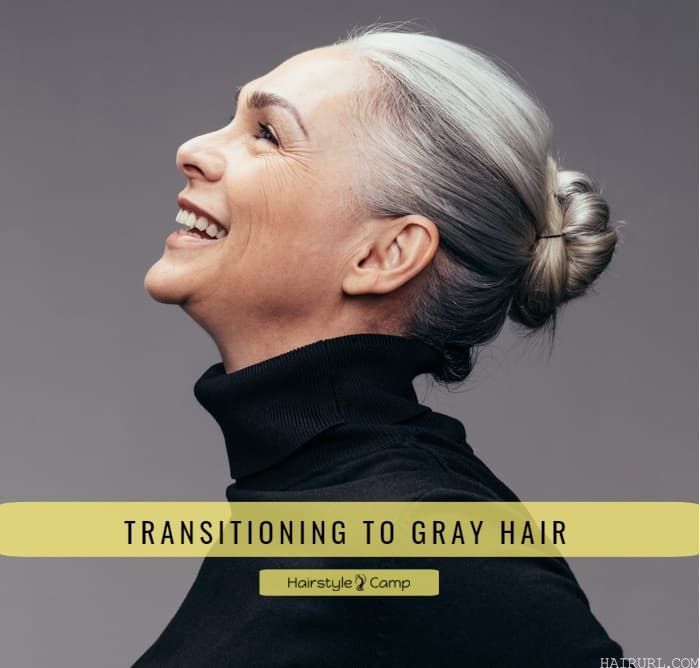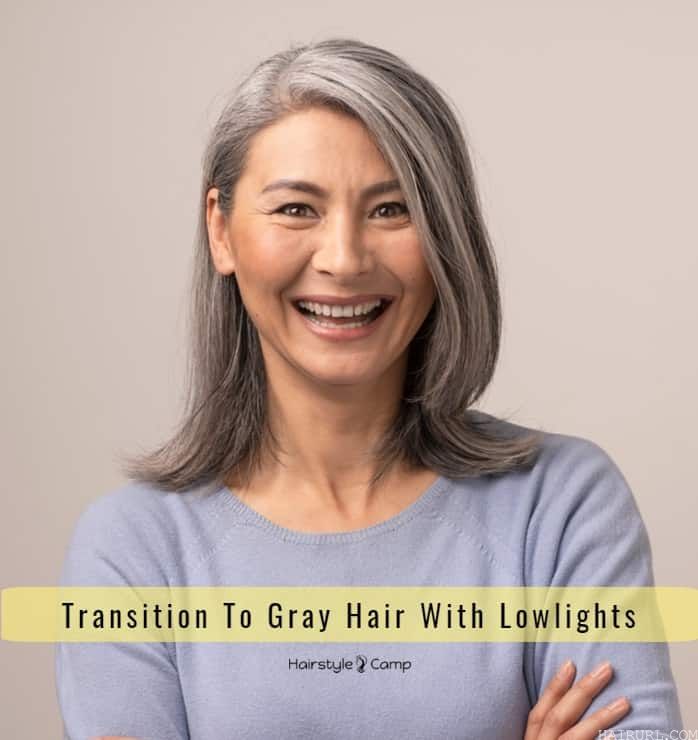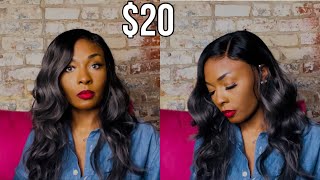How To Make Transitioning To Gray Hair Seamless And Easy
- Posted on 20 December, 2021
- Hair Styling
- By Anonymous
Going gray doesn’t happen at all at once, so neither should the process of transitioning to gray hair from your regular color. Gray hairs come in subtly over time, until you notice a demarcation line between where the color has stopped and gray has started. Removing hair color to go grey should be modeled in the same gradual way, and with patience as the key.
Below, we discuss all things gray; from highlights, lowlights, and babylights to going gray at a salon vs. doing it on your own. We promise to tell you everything we know so that your journey from color to gray is smooth sailing.
Exercise Patience + Honesty When Transitioning To Gray Hair

It can take 6 months to 1 year to go fully gray, so keep this time frame in mind when deciding on how you want to transition your hair. It’s critical to remember that it’s called a transition for a reason; to adjust your hair to gray in a healthy yet attractive way.
There are a few rules that never change, regardless of the method you’ll be using. First, never try to lighten natural salt and pepper hair color more than three levels in a single process and never apply dark colors and then attempt to lighten them to create gray effects.
Lettings your roots grow is in cheap and requires less work, but it can be clunky and unstylish. Many of us want to go gray with grace, so it’s important to have an honest conversation with your stylist about your skin tone, natural base color, and even eye color. This will help you customize your look so your needs and wants are fully met.
For starters, you will need at least an inch of gray root growth to work with, regardless of the method that you choose, but especially before creating highlights and babylights.
Transition to Gray Hair with Highlights and Babylights

Highlights and babylights are the most expensive and time-intensive way to transition to gray hair. However, highlights ensure a natural-looking blend that is highly customizable. Plus, you can rest assured that you’re in the good hands of a professional.
To transition to gray hair with highlights, you don’t have to retouch your base color. Your stylist can color correct hair to match the gray that is growing in. Foil for highlights or babylights will gently blend all of the variations of tone in graying hair. Anywhere from three to five appointments will be necessary to fully complete the transition process.
Blondes make an easier transition from grey hair to dyed, because it takes a lot longer for the gray to become noticeable. Using a sheer toner for a fully highlighted effect without the legwork. Brunettes, on the other hand, should make the switch once more of the salt and pepper look has come in.
You will likely have to head back to the salon once or twice throughout the transition for your stylist to apply a gloss. These treatments add color and shine while giving hair a needed rest in between highlighting sessions.
Transition To Gray Hair With Lowlights

Lowlights, on the other hand, are dyed a few shades darker than your base color to add depth and dimension to your overall look. They are perfect for fighting those unwanted yellow and brassy tones that often come from highlighting gray hair.
The transition to gray hair with lowlights is done by adding streaks of your virgin hair’s tone to your look to create the most natural-looking contrast. We also love this method because it’s low maintenance and doesn’t require as many salon visits as highlights do. While highlights strip hair of color before applying the desired tone, lowlights ask that you simply add in dimension. Gray hair is naturally stripped of color.
For an even gentler solution, try semi-permanent color. Instead of penetrating the hair shaft, semi-permanent coats only the cuticle, giving you the look you need with less damage done to hair.
Growing Out Gray Hair From Home

Growing out gray hair without the time and price tag that comes with a salon job is absolutely possible. This way involves growing your gray in an inch or two and then cutting your hair into a short bob or pixie. Not everyone wants to go gray and cut hair super short at the same time, however.
You can cover gray roots as they grow with an at-home root touch-up. This way, you can blend in your roots for 5-6 weeks. A short hair cut with regular trims will speed up the transition process. If you’re looking to try new hairstyles and thinking you’ve become too old, here are some classy gray hairstyle ideas for women over 60.
Hair Maintenance During Transition
Overall upkeep when transitioning to gray hair is just as important as the coloring process. To keep gray highlights from getting brassy, use a purple shampoo regularly.
You may have to go back to the salon for more toner and glosses during your transition, but at home, glazes are also great to use. As hair ages and turns gray, it becomes drier, so it’s a good idea to incorporate powerful moisturizing conditioners into your haircare routine.
Key Takeaways
- Going gray is a month’s long process.
- Never lighten hair more than three levels in a single process.
- At least an inch of gray root growth is required before transitioning.
- Highlights and babylights create natural, gentle blends.
- Glosses maintain color and give hair a rest between coloring.
- Lowlights add depth and dimension.
- Lowlights are even more low maintenance than highlights.
- Use at-home touch up to cover grays as they grow.
- purple shampoos fight brassy tones.
- Moisturize dry hair as it ages.
Much like the aging process itself, transitioning to gray hair takes time, patience, and a little self love. You can complete the process on your own or work with a stylist to approach the process gently and according to your overall maintenance level. Going gray doesn’t have to be dull. In fact, with the right care, it can be absolutely fabulous.




